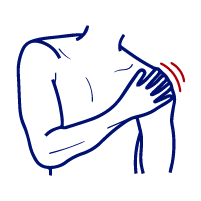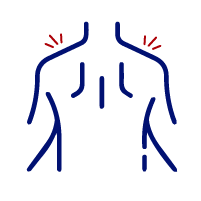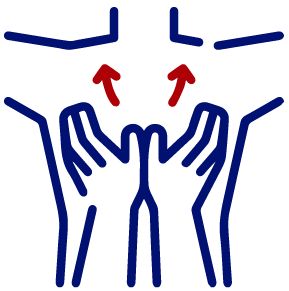
What is the Lower Back Pain?
Low back pain, or LBP, is a condition that affects the lower part of the back. It can be acute, lasting a few days to weeks, or chronic, persisting for more than 12 weeks. Patients may experience anything from mild discomfort to severe, debilitating pain.
What are the symptoms of Lower Back Pain?
Common symptoms we observe in our patients with low back pain include:

Dull, aching pain
This is often the most common symptom, and it can range from a mild discomfort to severe, debilitating pain.

Sharp or shooting pain
Some individuals may experience sharp, stabbing, or shooting pain that can radiate down the legs. This is often associated with conditions like sciatica.

Stiffness
Patients may feel that their lower back is stiff, and movement can be restricted or painful.

Muscle spasms
Spasms in the muscles of the lower back can contribute to pain and discomfort.

Tenderness to touch
The lower back area may be sensitive to touch, and certain areas may feel tender or sore.

Reduced range of motion
Low back pain can limit a person's ability to bend, twist, or perform certain movements.

Pain with certain activities
Symptoms may worsen with specific activities, such as lifting, bending, or prolonged sitting or standing.

Radiating pain
Pain from the lower back can radiate into the buttocks, hips, thighs, or even down the legs. This is particularly common in cases of lumbar radiculopathy (e.g., sciatica).

Numbness or tingling
Patients may experience numbness, tingling, or a "pins and needles" sensation in the lower back, buttocks, or legs, which can be associated with nerve compression or irritation.

Weakness
Some individuals may notice weakness in their legs or difficulty walking, which can be related to nerve compression or muscle involvement.

Pain that worsens with specific movements or positions
Symptoms may exacerbate when the patient stands, sits, or engages in certain movements.
Causes and Risk Factors of Lower Back Pain
In this section, we delve into the intricate aspects of low back pain, seeking to provide a comprehensive understanding of this common condition.
What are the causes?
Low back pain can be triggered by various factors, including:
- Muscle strains or sprains: Overstretching or tearing of muscles and ligaments in the back.
- Herniated or bulging discs: When spinal discs protrude or herniate, they can press on nearby nerves, causing pain.
- Arthritis: Degeneration of the spine’s joints and discs.
- Poor posture: Consistent improper posture that stresses the lower back.
- Obesity: Excess weight straining the lower back.
- Trauma or injury: Accidents or sports-related injuries leading to back damage.
- Spinal stenosis: The narrowing of the spinal canal, often associated with aging, compressing nerves.
What are the risk factors?
- Age: Low back pain becomes more common as people age due to natural spinal wear and tear.
- Sedentary lifestyle: Lack of physical activity and prolonged sitting weaken the back muscles, increasing the risk.
- Smoking: Smoking affects circulation and can reduce nutrient supply to spinal discs, potentially raising the risk.
- Occupational factors: Jobs involving heavy lifting, repetitive bending, or even prolonged sitting can increase the risk.
- Genetic predisposition: Some individuals may have a genetic predisposition to conditions that raise the risk of low back pain.
How is Lower Back Pain diagnosed?
To offer the most effective treatment tailored to your unique needs, we conduct a comprehensive assessment. This includes but isn’t limited to the following
- Physical Examination: We thoroughly assess our patients, looking at their posture, gait, and spinal mobility.
- Orthopedic Testing: Orthopedic tests help us identify specific issues, like the straight leg raise test for diagnosing sciatica.
- Neurological assessment: This can vary greatly but includes reflexes, balance, sensation changes and strength changes like loss of grip strength.
- Imaging: In some cases, we may order X-rays, MRI, or CT scans to visualize the spine and assess structural abnormalities.

How can we treat Lower Back Pain
Effective management of low back pain can involve several approaches:
Schedule Your Appointment Today
Contact us today to book a free 15-minute consultation with our Chiropractor in Highlands Ranch! We look forward to getting you on the path to optimal health and wellness.




